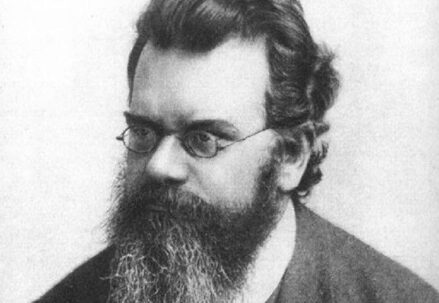In the realm of astrophysics and planetary sciences, an editor from ‘The Secrets Of The Universe’ stands out. Hailing from Punjab, India with a Master’s degree in Physics, this individual embarked on a journey to pursue doctoral research in Barcelona, Spain. Their focus? The intriguing radio emissions of exoplanets. With a passion for writing, they delve into topics ranging from quantum mechanics to advancements in the space industry.
The Mystical World of Nebulae
Today, the editor brings focus to one of nature’s most breathtaking creations: nebulae. These interstellar clouds, comprising mostly hydrogen and helium, are essential in the universe’s evolution, birthing stars and planets. Whether illuminating the night sky or lurking as dark patches, nebulae hold many secrets.
Observational History: A Glimpse into the Past
The history of observing nebulae, indeed, spans across millennia, intertwining with the evolution of astronomy itself. Ancient astronomers like Ptolemy and Abn al-Rahman Suri laid the foundational observations, noticing the subtle yet significant differences in the night sky. Their observations, though limited by the technology of their time, were crucial in distinguishing nebulous objects from typical stars. The Renaissance period marked a significant leap, with the invention of the telescope. Nicolas-Claude Fabri de Peiresc’s identification of the Orion Nebula using this new tool opened a new chapter in cosmic exploration, allowing astronomers to peer deeper into the mysteries of space. This discovery led to a cascade of further observations, each adding a piece to the cosmic puzzle.
However, it was Edwin P. Hubble’s groundbreaking work in the 20th century that truly transformed our understanding of nebulae. His research, using more advanced telescopes and photographic techniques, uncovered the vast and varied nature of these celestial bodies. Hubble’s work distinguished between different types of nebulae and laid the groundwork for understanding their role in star formation and galactic evolution. His discoveries propelled nebulae from mere curiosities to key elements in the study of the universe, forever changing how we perceive the night sky.
Unraveling the Types of Nebulae
Galactic and Extragalactic Nebulae
The vast universe houses two main nebula categories: Galactic and Extragalactic. The latter remains mysterious, but the former includes diverse types like Diffuse and Regular Nebulae.
The Enigmatic Diffuse Nebulae
These irregular dust clouds, whether luminous or dark, are fascinating tapestries woven into the fabric of the cosmos, predominantly nestled within the spiral arms of galaxies. Their presence in these regions is not a mere coincidence but a testament to the dynamic processes occurring in galaxies. Spiral arms, rich in gas and dust, provide the perfect nurseries for these nebulae, fostering their growth and evolution.
The luminous nebulae, aglow with radiant energy, are often sites of intense star formation. They shine due to the interplay of light from newly formed stars and the ionization of surrounding gases. Their brilliance is not just a spectacle but a beacon signaling the birth of new stellar bodies. Conversely, the dark nebulae, shrouded in mystery, cloak the starlight behind them. These dense clouds, rich in molecular compounds, are the silent architects of star formation, hiding within them the seeds of future stars.
Their undefined shapes add to their allure, each nebula unique in its composition and appearance. Astronomers and stargazers alike are drawn to these celestial phenomena, as they paint a picture of the ongoing cycle of stellar life and death. The luminous and dark nebulae, each with their distinct characteristics, remind us of the vast and varied nature of the universe, constantly shaping and reshaping the cosmic landscape.
Reflection Nebulae: Cosmic Mirrors
These clouds reflect light from nearby stars or emission nebulae. Illuminated by B type stars, their scattered light reveals dust particles in a mesmerizing display.
Emission Nebulae: The Luminous Ones
Emission nebulae, often found near hot, young stars, are some of the most dynamic and visually stunning phenomena in the cosmos. These nebulae spring to life when the intense ultraviolet radiation from nearby stars ionizes the surrounding gases, primarily hydrogen. This ionization process leads to a spectacular fluorescence effect, causing the nebulae to glow in an array of vivid colors.
Within these radiant nebulae, H II regions are particularly noteworthy. They are vast clouds of partially ionized hydrogen where new stars are being forged. The energy emitted by these nascent stars further ionizes the surrounding gas, contributing to the nebula’s glow. This process is not just a spectacular light show but a fundamental part of the stellar life cycle. H II regions are the birthplaces of stars, making them crucial in understanding the formation and evolution of stellar systems.
The study of these regions provides insights into the conditions necessary for star formation. It reveals the interplay between massive stars and the interstellar medium, showcasing the delicate balance between the energy output from stars and the dynamics of the surrounding gas. Emission nebulae, with their mesmerizing beauty and scientific significance, are thus pivotal in our quest to unravel the mysteries of star birth and the intricate workings of our universe.
The Aftermath of Stars: Supernova Remnants
Massive stars end their lives in supernovas, leaving behind nebulae from their outer layers. These remnants interact with the interstellar medium, creating potent X-Ray and radio emissions.
Dark Nebulae: The Obscured Clouds
These dense dust clouds block visible light, appearing as dark patches in the cosmos. They are detectable only through microwave radiation emitted by their molecular components.
Planetary Nebulae: Rings of Wonder
Formed from the expelled gas of aging stars, these nebulae have a regular, often ring-like shape. Their glowing appearance results from UV radiation ionizing the gas around a central hot star.
In every article, the editor’s deep understanding and love for the cosmic phenomena shine through, bringing the wonders of the universe closer to the readers.
Conclusion: Embracing the Cosmic Tapestry
As our journey through the celestial realms of nebulae concludes, it becomes clear that these cosmic entities are more than just distant, shimmering clouds; they are the very cradles of creation in our universe. Each type of nebula, from the radiant emission nebulae to the enigmatic dark nebulae, plays a pivotal role in the cosmic lifecycle, contributing to the birth, evolution, and eventual demise of stars. The exploration of nebulae is not just a pursuit of knowledge, but a voyage into the heart of our existence.
The advancements in astrophysics and observational technologies continue to peel back layers of these mystifying structures, revealing the intricate processes that govern the universe. These discoveries not only enhance our understanding of the cosmos but also fuel our imagination and curiosity. They remind us of our tiny but significant place in the vast cosmic tapestry.
In essence, nebulae are more than mere subjects of scientific inquiry; they are timeless storytellers, narrating the ongoing saga of the universe. As we gaze up at the night sky, we are not just spectators but also participants in this grand cosmic dance. The study and admiration of nebulae thus become a humbling and enlightening experience, one that connects us across space and time to the farthest reaches of the universe.





